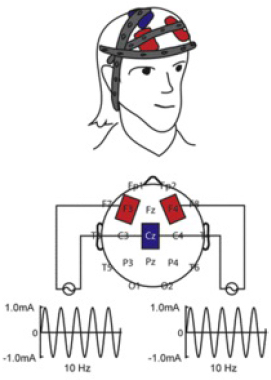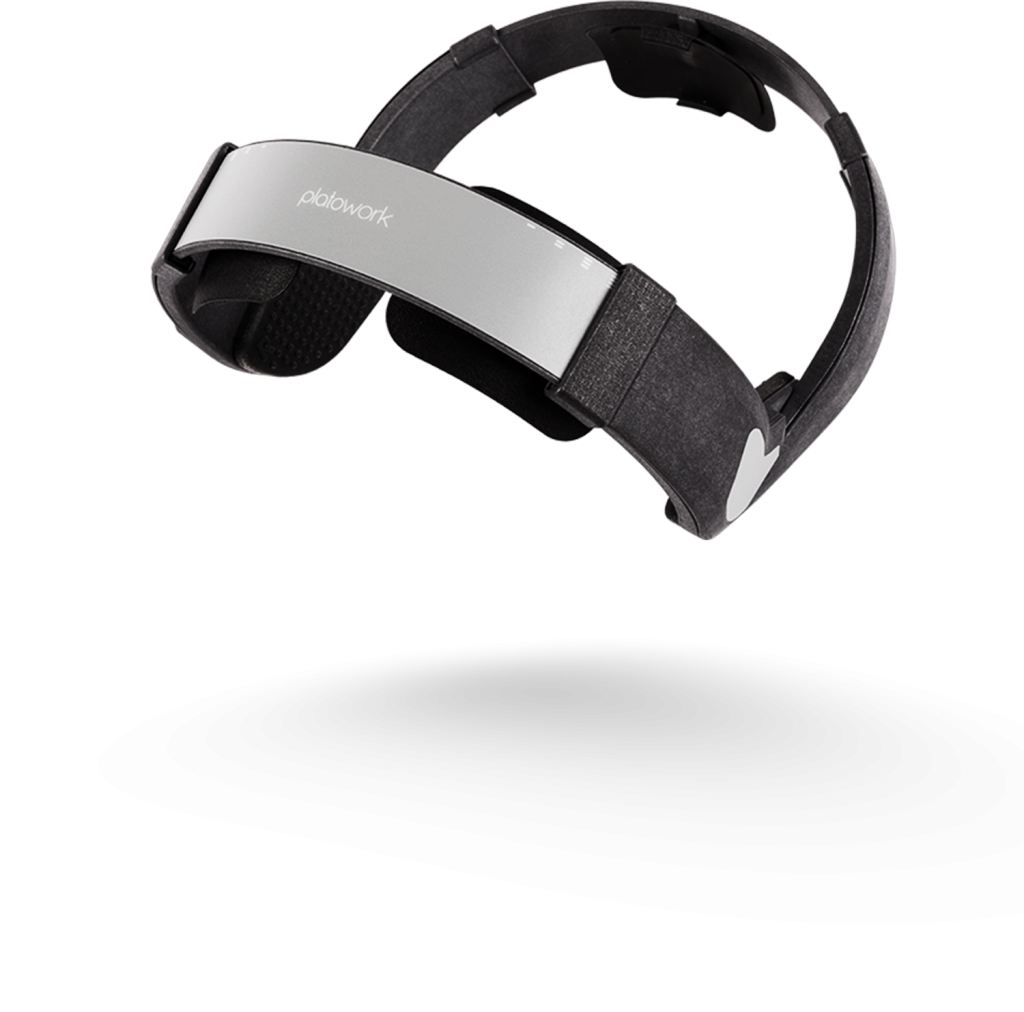For context, Lex Fridman’s podcast is becoming a very popular show.
Interesting and pretty much state of the art at the moment for neuro/wearable.
Category Archives: Video
Transcranial Electrical Stimulation | Aaron J Newman
Aaron J Newman of Dalhousie University and The NeuroCognitive Imaging Lab gives an introductory lecture to transcranial electrical stimulation.
In addition to tDCS he covers tACS and tRNS. It was interesting to be reminded of when and how stimulation can be detrimental to certain types of the tasks often presented in studies.
Nathan Reviews the LIFTiD tDCS Device
Our friend and trusted neuroscience PHD student Nathan just published a review of the new LIFTiD tDCS device, A Look At The LIFTiD tDCS (Full disclosure, both he and I were given one to try out by Caputron. I’ve been waiting for Nathan’s report before trying mine.)
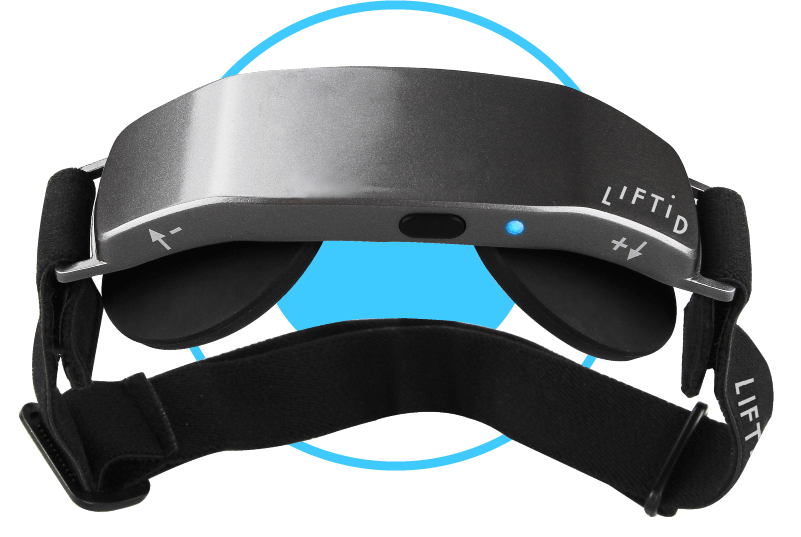
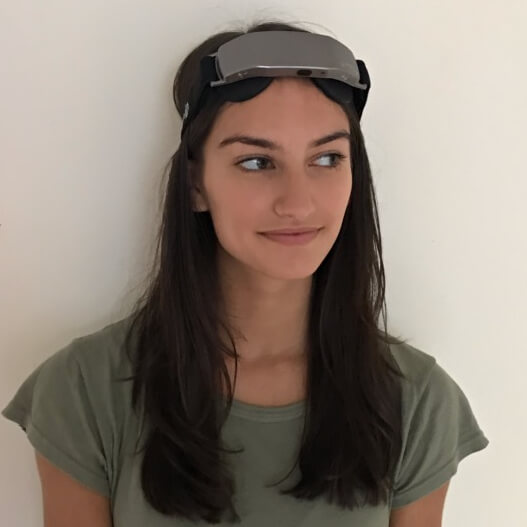
The obvious advantage to the LIFTiD device is it’s simplicity and ease of use. As I suspected this also turns out to be it’s main weakness in that you have only the default montage available.
The LIFTiD team was advised by neurosurgeon Dr. Theodore H. Schwartz. He was recently interviewed by Neurogal MD. While much of what is discussed will be familiar to DIYtDCS readers, I was interested to see that Dr. Schwartz was quick to point out what we don’t know about tDCS and neurostimulation.
The Military Discovered A Way To Boost Soldiers’ Memories, And We Tried It | Elise Hu, NPR
Have a look at the science behind DARPA research investigating the possibility of enhancing memory using tACS. Dr. Vince Walsh is the lead investigator. and team from NPR reporting.
In a multi-year study at the University of New Mexico, volunteers received a fraction of 9-volt battery’s worth of electrical stimulation to their scalps while they slept at the lab. When they woke up, they were asked to play a video game they had learned the day before. Turns out that subjects were significantly better at it after the night spent in the lab.
The potential and Limitations of Transcranial Direct Current Stimulation | Marom Bikson
If you’ve been following along then most of what’s discussed in this May, 2018 lecture won’t surprise you, but it’s nicely put together and I would say, emphasizes the validation of applying stimulation while ‘doing something’ (Functional Targeting). The idea being that the stimulation then amplifies the activity of the neurons involved in the task. Though it does beg the question, What would be an appropriate task to involve a patient with in the treatment of depression? I think it’s important to note that most of what is discussed, in terms of any affects tDCS may have, remain hypothetical!
The 2019 joint meeting of Neuromodulation:The Science and NYC Neuromodulation is about to start and a page devoted to abstracts has been published. It will be updated as more info becomes available. Want a look into the future of neurostimulation? Here it is!
Dr. Brent Williams of SpeakWisdom recently published an article on the new LIFTiD tDCS device, How to Use the LIFTiD Headset for Depression Relief. The device (which is available at Caputron) has yet to be extensively reviewed but its main advantage, defined electrode placement, could also be seen as a weakness.
Higher, Better, Stronger, Faster — Elise Hu, NPR
Nicely done (for a media outlet) six week experiment to test efficacy of HaloNeuro‘s Halo Sport tDCS device. Elise’s takeaway is that she wishes the effect was a little more dramatic. But her trainer tells her that extra 1-1/2″ is actually significant. Certainly in pro sports settings I’m sure it would be. Nice overview of hypothetical understanding of how tDCS works. She also interviews HaloNeuro co-founder Daniel Chao and Olympic volleyball athlete Kim Glass. Elise on Twitter
Why Can’t We Stimulate The Surface of the Brain Non-Invasively?
No doubt a naive question, but something I’m super-curious about.
Certain neurosurgeries require patients to remain awake in order to communicate with the surgeon. In this paper, Cingulum stimulation enhances positive affect and anxiolysis to facilitate awake craniotomy, the authors demonstrate that stimulation of “the left dorsal anterior cingulum bundle was discovered to reliably evoke positive affect”. A low current stimulation evoked a smile and a “really good feeling”.
Many years ago, perhaps even as a boy, I saw this clip of Wilder Penfield eliciting memories from brain surgery patients, and it really stuck with me. Probably the notion of one’s entire stream of consciousness existing somewhere in the brain waiting to be unlocked with a bit of stimulation is incorrect, but nevertheless, to hear these actual recordings of patients suddenly recalling events from their past is fascinating.
My question is, Why can’t non-invasive brain stimulation, like tDCS, evoke similar responses to those outlined in these two videos? If it’s that tDCS stimulates too broadly, then perhaps something like Temporal Interference (where stimulation occurs at the point where two frequencies meet) could be used to stimulate these areas. Certainly an experiment worth thinking about.
Electric stimulation ‘a promising advancement’ for reversing memory loss | CTV
CTV : Electric stimulation ‘a promising advancement’ for reversing memory loss
From NorthwesternNow: Brain stimulation reverses age-related memory loss
“Older people’s memory got better up to the level that we could no longer tell them apart from younger people,” said lead investigator Joel Voss, associate professor at Northwestern University Feinberg School of Medicine. “They got substantially better.”
We covered Joel Voss and related research in September of 2018
Stimulation Excites the Brain to Form Better Memories | NorthwesternU
Paper: Network-targeted stimulation engages neurobehavioral hallmarks of age-related memory decline
Not related directly with the research, but interesting to note in the video where Canadian researcher Jed Meltzer, a scientist at Baycrest Hospital’s Rotman Research Institute in Toronto is shown demonstrating an ActivaDose device and an unusual montage.
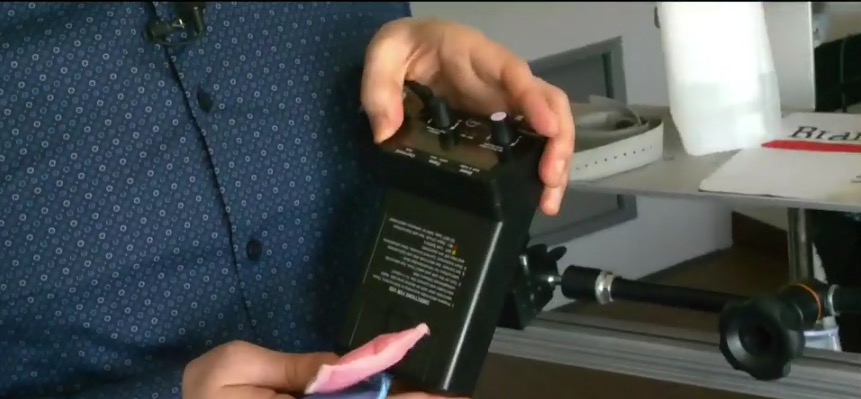
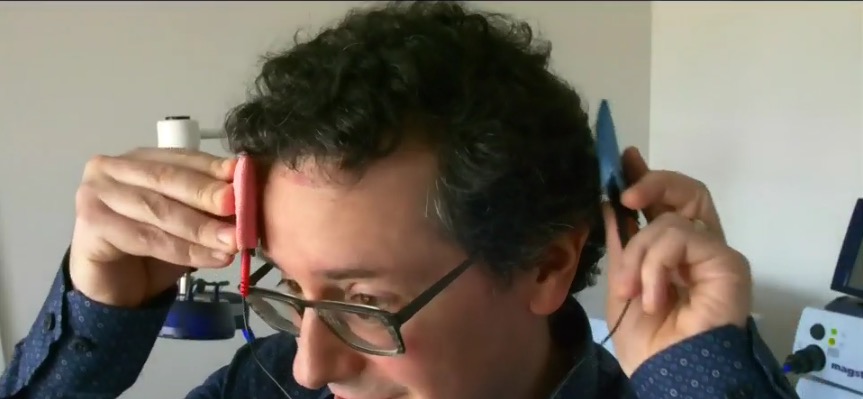
Gamma Waves Enhance the Brain’s Immune System to Treat Mice with Alzheimer’s disease.
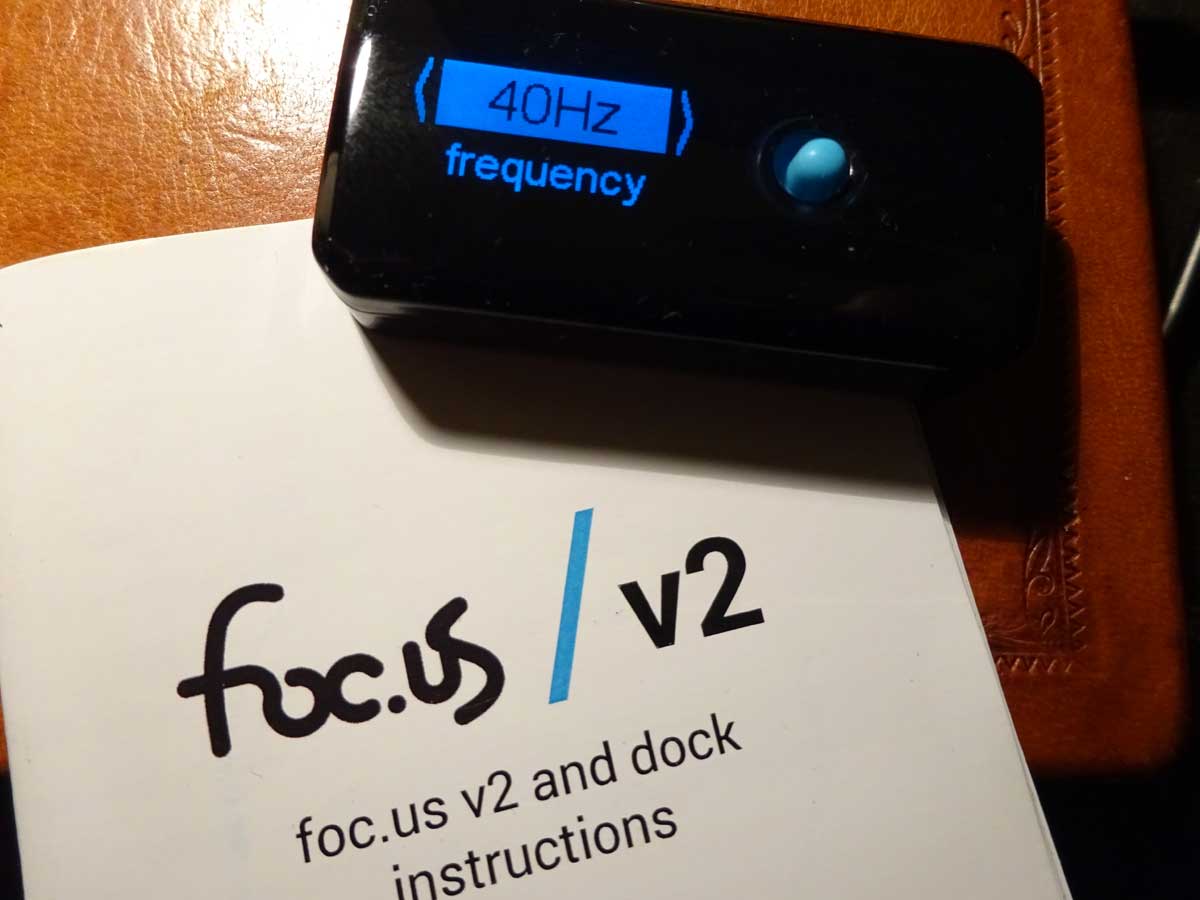
[Update 3/18/19] Exciting news in the fight against Alzheimer’s!
Dr. Tsai has a new lab. Tsai Laboratory
In the new study, researchers added acoustic stimulation that pulsed at the same frequency as the visual stimulation. And when mice — which were bred to develop Alzheimer’s-like symptoms — were exposed to both, researchers saw that the neurons in several of their brains’ key memory circuits chimed in and began humming along at exactly the same frequency.
LA Times https://www.latimes.com/science/sciencenow/la-sci-sn-alzheimers-brain-waves-20190315-story.html
What came next was remarkable and unexpected, even to the authors of the study.
In the wake of the sound and light sessions, an army of newly energized immune cells descended on several areas of the treated brains, including those most affected by dementia. Then they set to work with a vengeance on some neglected housecleaning.
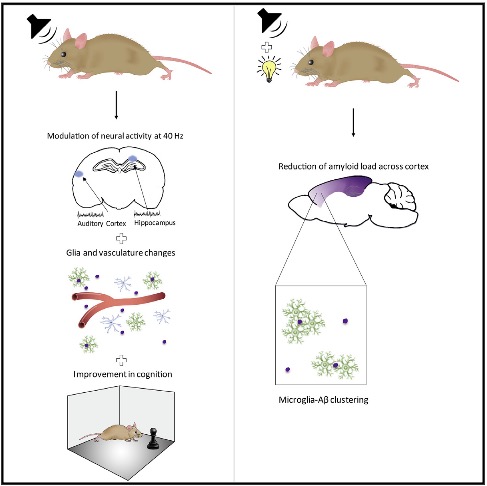
A Possible Alzheimer’s Treatment With Clicks and Flashes? It Worked on Mice (NYT)
Light and sound stimulus therapy generates a buzz in Alzheimer’s research world (LAT)
——–
[Update 2/3/18] Nature reports on updates since the information about the research first emerged. How flashing lights and pink noise might banish Alzheimer’s, improve memory and more
——— Original article
I was first alerted to the story from a December 7 article in the Guardian, “Strobe lighting provides a flicker of hope in the fight against Alzheimer’s“. Researchers from the Picower Institute for Learning and Memory at MIT, working with (let’s call them) ‘Alzehiemer’s mice’, had discovered that flashing a light at 40hz (on-off at 40 times per second) increased gamma wave oscillations in the brain which led to the reduction of Amyloid beta (think, plaque) through the activation of microglia ‘clean-up’ immune cells. Here, let them explain it!
The paper, Gamma frequency entrainment attenuates amyloid load and modifies microglia makes clear that the light-flickering affected the visual cortex, which makes sense, as the light reaches the brain through the eyes. But wait, thinks I, what about tACS (transcranial Alternating Current Stimulation)… haven’t I seen numerous papers implying the ability to ‘entrain’ brain waves with tACS? What if you could increase 40hz Gamma in other parts of the brain? (Google Scholar Search: transcranial alternating, entrain, gamma)
But then I discovered that Radiolab just covered this exact story and it’s totally amazing! Really a must listen. So fun to hear the researcher’s amazement at this accidental (sort of) discovery!
So what’s with the photo of the Foc.us v2 device set up for a 40hz tACS session? Just that…

More about The Picower Institute for Learning and Memory at MIT
Stimulation Excites the Brain to Form Better Memories | NorthwesternU
Not tDCS, but TMS -Transcranial Magnetic Stimulation, another form of TES – Transcranial Electric Stimulation, that is being used both clinically (FDA approved for the treatment of depression) and as a research tool. Unlike tDCS, TMS can be of sufficient power to cause neurons to fire– imagine a finger twitching in response the the activation of the TMS device.
The video describes an experiment where researchers are attempting to improve the quality of memory encoding using TMS. The point of sharing it with you on the blog is to point out how difficult this is in fact to do. tDCS for cognitive enhancement was what initially inspired this blog, and now these six years later, I’m not sure we’re any closer to having a useful tool for cognitive enhancement of any kind, though I am reasonably confident in stating that tDCS for the treatment of depression is at least worth trying. (Other areas of research I’m more optimistic about are tDCS and Aphasia, tDCS and Parkinson’s, and tDCS for the enhancement of physical training. But in all of these the jury is still out, as there is conflicting research results.)
Note as well in the video the elaborate set up for measuring the effect of TMS in the memory study. These are often standardized tests used throughout psychology research. Unfortunately they are often costly and complicated to use. Point being that any sort of DIY cognitive enhancement experiments need to consider how effects will be measured.
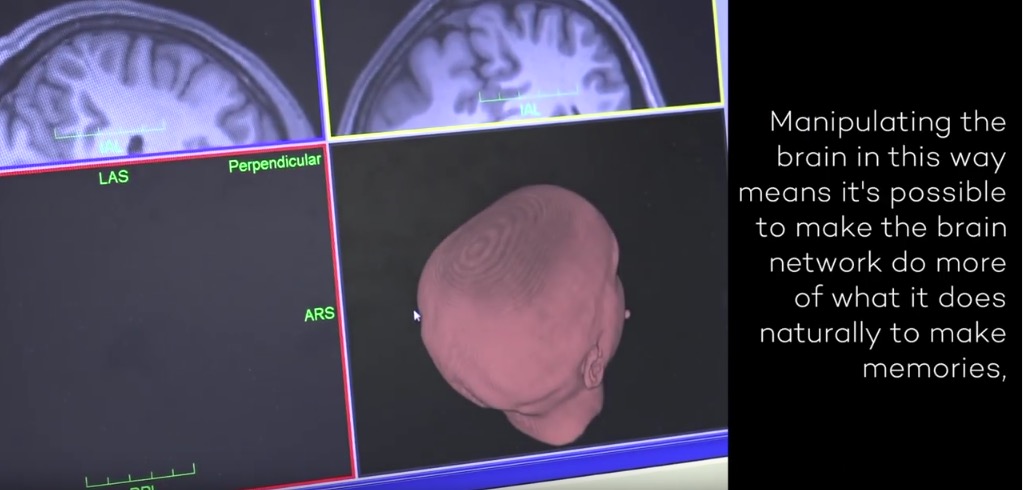
Read more about the research here: Stimulation excites the brain to form better memories
Find the paper here: Selective and coherent activity increases due to stimulation indicate functional distinctions between episodic memory networks
See also: Hippocampal memory encoding and retrieval
Robin From Caputron Demonstrating Activadose II
Robin is the founder of Caputron which is a distributor of tDCS and other TES devices. Here he demonstrates the Activadose II tDCS device. For reasons mentioned elsewhere on the blog, this is the device I recommend (this is an FDA approved – for Iontophoresis – device. I’d suggest the 2mA model with the 3×3 sponge set – this is closest to what most research studies use). Caputron provides DIYtDCS readers a generous discount (I also earn a referral fee) when you use discount code ‘diytdcs’ at checkout (for any product offered by Caputron). I interviewed Robin back in 2015 when he was first getting started. Check out that post here.
Stimulating the Creative Brain – Morten Friis-Olivarius | PlatoScience
Stimulating the Creative Brain | Morten Friis-Olivarius | TEDxOslo
PlatoScience.com
PlatoWork neurostimulation device manual.
Shown here (from the video) working on the PlatoWork prototype. Note montage which according to the talk, would be focused on increasing creativity. In the video he calls the stimulation TES (Transcranial Electric Stimulation).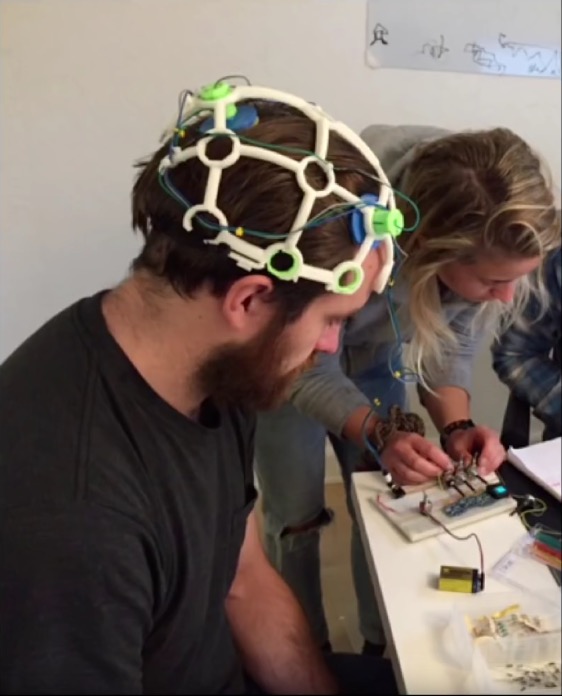
“Creative people somehow forget to turn off the spontaneous system while thye’re working on a task”.
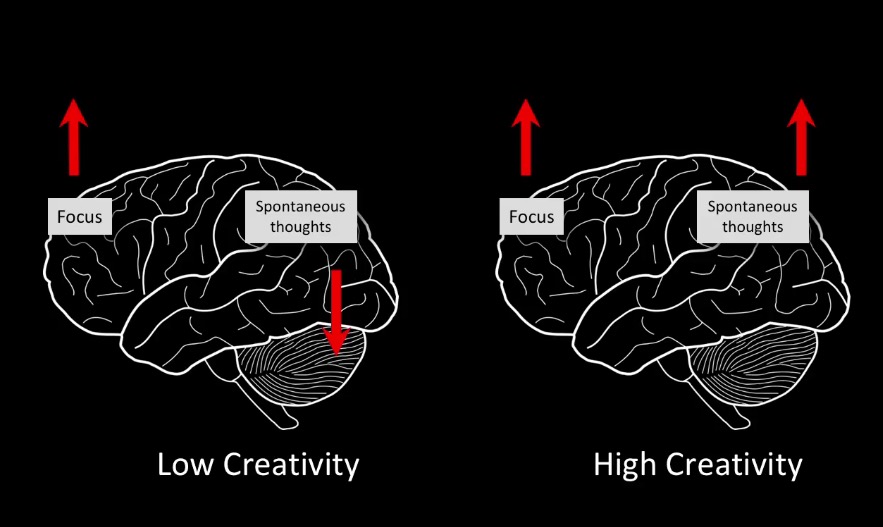
A later prototype.
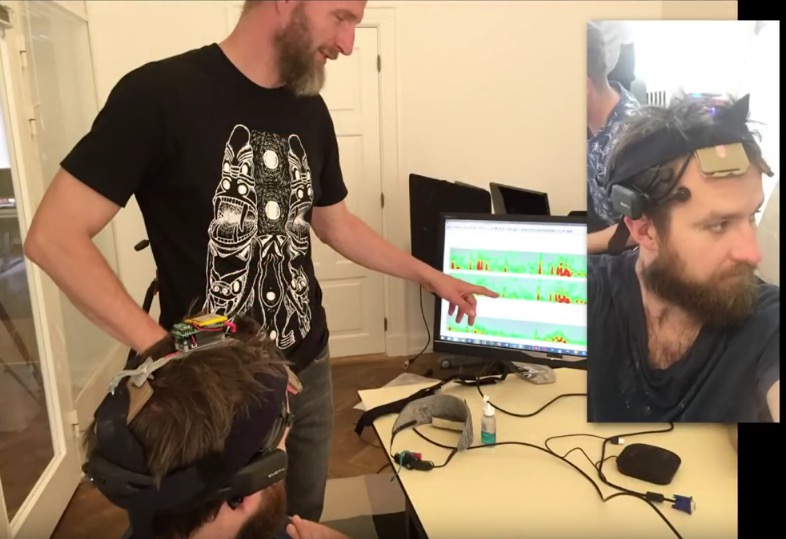
From the manual.

Aha, so there are 3 electrodes. And the placement resembles another study I’m aware of that used tACS to enhance creativity. (Functional role of frontal alpha oscillations in creativity). In that study…
Stimulation electrodes were positioned bilaterally over the frontal cortex (centered on EEG electrode locations F3 and F4) with a common electrodeover the apex (Cz).
But the PlatoScience FAQ clearly states they’re using tDCS.
At PlatoScience we use a version of neurostimulation called tDCS (Transcranial Direct Current Stimulation).
So here we have the first (to my knowledge) commercially available (€399) TES device designed specifically to enhance creativity. Interestingly, PlatoScience has a forum and test site (according to the video) where users can discuss their experience. The device is operated via smart phone.
Marom Bikson plenary talk on tDCS at Society of Biological Psychiatry 2018 meeting
Current state of tDCS at an introductory level.
Slides(pdf)
Marom Bikson plenary talk on tDCS at Society of Biological Psychiatry 2018 meeting (May 12, 2018)
Three-minute magnetic brain stimulation treatments can reduce depression symptoms | CTV
A three-minute treatment involving magnetic stimulation of the brain works just as well as the standard form of such therapy for people with hard-to-treat depression, a new study has found.
AFTD Webinar: Stimulating the Brain to Preserve the Mind | Dr. Roy Hamilton
Roy Hamilton director of the Laboratory for Cognition and Neural Stimulation, Perelman School of Medicine, University of Pennsylvania.
Published on Dec 6, 2017
Dr. Roy Hamilton of the University of Pennsylvania describes two types of noninvasive brain-stimulation technologies — transcranial magnetic stimulation (TMS) and transcranial direct current stimulation (tDCS) — and addresses their potential role in the assessment and treatment of FTD disorders. This webinar, presented on November 30, 2017, is the fifth in the AFTD Educational Webinar series.

